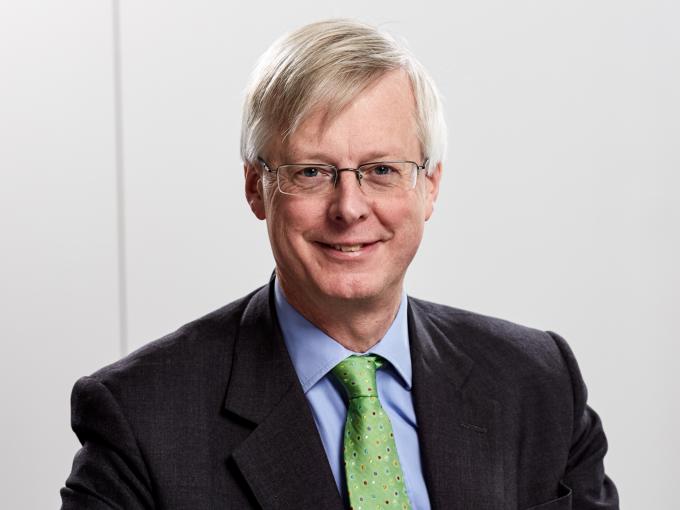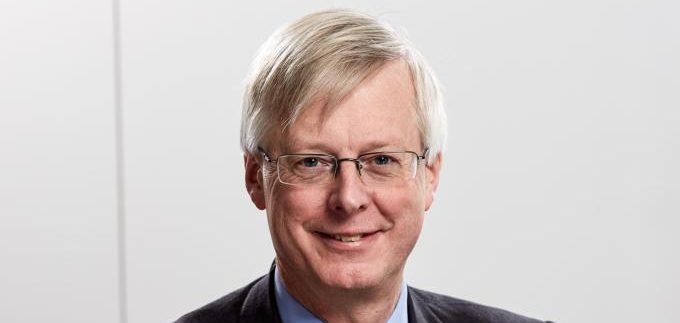
Sponsored Q&A: In the last five years years, the Local Authority Property Fund has gone from being a relatively unknown quantity to a staple in the local authority treasury investor’s toolkit. It recently reached an important milestone in its history when it broke through the £1bn mark of local government assets under management. Room151 caught up with Michael Quicke, OBE, chief executive of CCLA to understand more about the origins of the fund and about what the future holds.
Room151: I think it’s fair to say the LAPF rumbled along steadily for some years without growing spectacularly. Can you tell us about the origins of the fund?
Michael Quicke, OBE (MQ): The fund was launched in 1972, specifically designed to address the needs of local authorities, and overseen by local authority experts. Originally, the only investors were ;ocal authority pension funds. As this sector was reorganised so cash flows dried up, some of the pension fund investors stayed in, but the recent growth has come from treasury investors.
151: So what was the turning point? Why did local government treasurers suddenly take an interest in the LAPF?
MQ: It was a combination of factors. Pressure on local authority funding was severe and intensifying and it became increasingly clear that a low interest rate environment was going to persist for some time. At the same time, conditions in the commercial property sector began to improve and became attractive to treasury investors. Together, these factors created conditions where we had an interested and receptive audience and a pretty good story to tell them. We began to bang the drum and so did some investment consultants, there is no doubt that their independent endorsement added credibility to the message.
151: Now you’ve reached £1bn of AUM. Can you tell us how that breaks down across UK local government?
MQ: The Fund has enjoyed very broad support from a client base which is diversified by type, size and location – it really is representative of the sector as a whole. We have 220 investors including town and parish councils which have invested thousands, and unitary authorities with tens of millions in the fund.
151: Why this property fund? Presumably there are many good property funds out there.
MQ: There are other property funds out there, but none with the full range of attributes that LAPF offers. Investors clearly take comfort from the independent oversight and there are of course some accounting advantages too, but I think the main attraction is that a high income yield is an explicit objective. The consistency of payment is the main reason for the investment.
151: So as the fund has grown, how have you developed the portfolio?
MQ: The growth in assets has allowed us to deepen the portfolio and add some truly excellent assets, some of a scale that would be simply too great for a smaller fund. The cash flows have been helpful too in rebalancing the portfolio at the sub-sector level, for example increasing significantly the weighting to industrials.
151: What difference do you think it has made to council bottom lines in recent years?
MQ: The fund has provided investors with a significant increase on the income that they would have received had they left the funds on deposit. Many investors have told us that the increase in income earned has either resulted in important improvements in services or the maintenance of services that would otherwise have been cut.
151: Property as an asset class will go through good times and bad. What will the bad times mean for investors?
MQ: Property is a long-term investment with values linked to the progress of the economy. As a result, property as a sector will certainly have periods of weakness from time to time. We try to mitigate that by holding good quality assets and being more exposed to the stronger parts of the market – but the LAPF will reflect market trends. The good news for investors is that in these downturns the income payments should continue, protected by their contractual nature, enabling local authorities to hold the asset whilst capital values recover.
151: And there has been much talk about IFRS9 and funds like yours. What’s your view?
MQ: I think we need clarity and an environment that allows the sector to concentrate on the main task of managing local government. That means a relatively broad statutory over-ride.
151: So what next for the property sector generally? Where do you think we are in the cycle?
MQ: I think the sector is in a mature phase of the cycle but that doesn’t mean that it’s about to turn down. Valuations are full but not excessive and the speculative surge in supply which has ended past cycles is absent this time around. The broad consensus expectation is for returns in the period ahead to come mainly from income and I think that’s a reasonable expectation. Of course, we will try to do better!
151: Lastly, is there scope for the fund to grow further still?
MQ: From the property market perspective there is ample scope for the Fund to grow- and grow substantially from here – without compromising on quality or the focus on a consistent, growing income.
Michael Quicke is chief executive of CCLA. He was also awarded an OBE for his services to national heritage in 2013.
*CCLA is the lead sponsor of our annual Local Authority Treasurers Investment Forum & FD’s Summit. Qualifying officers can register their place at the event free of charge here.











